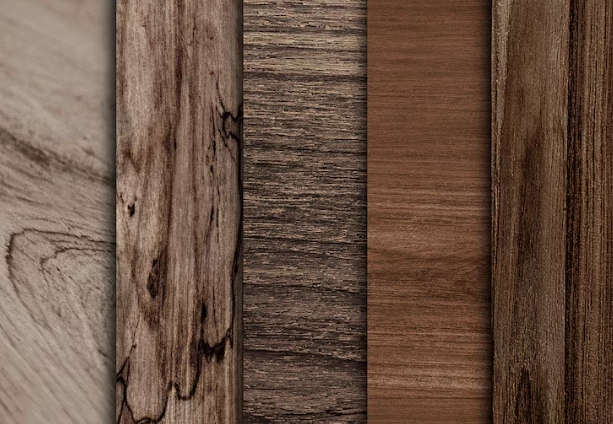Hardwood flooring is a timeless choice that has been popular in homes for centuries. Its durability, aesthetic appeal, and natural warmth make it an excellent investment for any homeowner. With so many types of hardwood flooring on the market, choosing the right one can be overwhelming.
This article will explore some of the most common types of hardwood flooring available today and their unique characteristics. By understanding the differences between each type of wood, homeowners can make informed decisions when selecting a hardwood floor that suits their personal style and practical needs.
Whether you’re remodeling your home or building from scratch, this guide will provide valuable insights into the world of hardwood flooring.
Oak Hardwood Flooring
Oak hardwood flooring is a popular choice for its durability, versatility, and natural beauty that enhances the aesthetic value of any interior space. Oak wood is dense and hard, making it resistant to wear and tear. It can withstand heavy foot traffic, making it an ideal option for high-traffic areas such as hallways, living rooms and kitchens.
Moreover, oak flooring comes in various finishes ranging from natural to smoked or stained options. The natural grain patterns of oak give it a unique character that adds depth and warmth to any room. Additionally, oak wood is readily available in most parts of the world, making it relatively inexpensive compared to other hardwood options.
Its popularity also means there are numerous installation methods available to suit different preferences such as floating floors or nail-down installations. Overall, oak hardwood flooring remains a top choice for homeowners seeking durable and stylish flooring solutions that can last for decades with proper care and maintenance.
Maple Hardwood Flooring
Maple hardwood flooring is a popular choice among homeowners due to its durability and resistance to wear and tear. This type of wood is known for its strength, stability, and hardness, making it an ideal flooring material for high-traffic areas such as the living room or kitchen.
Additionally, maple hardwood has a fine texture with consistent grain patterns that give it a classic look that never goes out of style. One unique characteristic of maple hardwood flooring is its ability to accept stains and finishes easily. This feature allows homeowners to customize their floors according to their preferences by choosing from a wide range of color options.
Maple can be stained in various shades from light natural hues to darker tones that mimic other types of wood, such as cherry or oak. Moreover, maple wood has the added benefit of being resistant to scratches and dents, making it an excellent option for families with children or pets.
Overall, when you invest in maple hardwood flooring, you are investing in a durable material that will provide you with both beauty and functionality for many years to come.
Walnut Hardwood Flooring
Walnut hardwood flooring is a popular choice for high-end homes, with sales of this type of wood increasing by 23% in the past year. This wood has a dark brown color that ranges from light to dark, and it is known for its rich and warm hues that can add elegance and sophistication to any space. It has a straight grain pattern with occasional waves or curls, which adds character and uniqueness to the flooring.
One of the main advantages of walnut hardwood flooring is its durability. Walnut is a dense wood that can withstand heavy traffic without showing signs of wear and tear easily. It also resists scratches, dents, and stains better than other types of hardwood flooring. Moreover, it has natural resistance to moisture, making it an excellent option for areas with high humidity levels such as basements or bathrooms.
Lastly, walnut hardwood flooring requires minimal maintenance; regular sweeping or vacuuming plus occasional polishing will keep it looking beautiful for years to come.
Frequently Asked Questions
What is the cost comparison between different types of hardwood flooring?
The cost of hardwood flooring varies depending on the type of wood used. For example, oak and maple are more affordable than exotic woods like Brazilian cherry. Installation costs also vary based on factors such as location and complexity of the job.
How do you properly maintain and care for hardwood flooring?
To properly maintain and care for hardwood flooring, avoid excessive moisture exposure and clean with a soft-bristled broom or vacuum. Use a pH-neutral cleaner and avoid harsh chemicals. Consider using area rugs to protect high-traffic areas.
Can hardwood flooring be installed in high moisture areas like bathrooms or kitchens?
Hardwood flooring can be installed in high moisture areas like bathrooms or kitchens, but certain precautions must be taken. It’s important to use engineered hardwood or solid hardwood with a sealed finish to prevent warping and damage from moisture. Proper ventilation and regular maintenance are also necessary.
What is the difference between solid and engineered hardwood flooring?
Although both solid and engineered hardwood flooring have a natural wood appearance, the former is made from a single piece of wood while the latter consists of multiple layers. This difference affects durability, cost, installation options, and maintenance requirements.
Is it possible to refinish hardwood flooring to change its appearance or restore it to its original condition?
Hardwood flooring can be refinished to change its appearance or restore it to its original condition. This involves sanding down the surface, staining and sealing it. However, the number of times it can be refinished depends on the thickness of the hardwood layer.
Conclusion
Hardwood flooring is a popular choice for homeowners due to its durability and timeless aesthetic appeal. There are various types of hardwood flooring, each with unique characteristics that make them stand out from one another.
Oak hardwood flooring is known for its strength and resistance to wear and tear. It has a distinct grain pattern that adds texture and warmth to any space.
Maple hardwood flooring, on the other hand, has a more uniform appearance with less prominent grain patterns. It is also known for its strength and durability, making it ideal for high-traffic areas in homes or commercial spaces. Its light color can brighten up rooms, creating a sense of openness.
Walnut hardwood flooring boasts rich brown tones that add warmth and elegance to any room. Its unique grain pattern creates visual interest while providing an inviting atmosphere. Walnut also has natural oils that help resist water damage, which makes it an excellent choice for bathrooms or kitchens.
In conclusion, choosing the right type of hardwood flooring can make all the difference in transforming your home into a beautiful space that reflects your personal style. Whether you prefer the prominent grain patterns of oak or the warm brown tones of walnut, there is a type of hardwood flooring perfect for every taste and need.
By understanding each type’s unique characteristics, you can select the best option that meets both your practical needs and aesthetic preferences. Invest in quality hardwood floors today to enhance your living environment while adding long-term value to your home!



